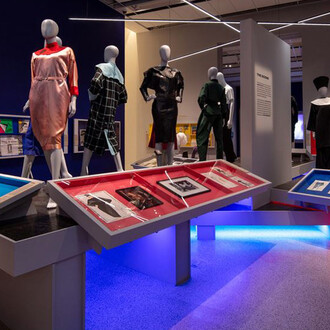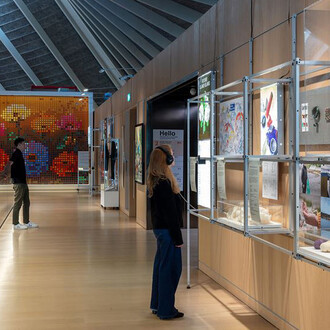As Britain enjoys an explosion of interest in two-wheeled travel, the Design Museum looks at the people and machines that make contemporary cycling what it is, and asks how it might develop in the future.
Cycle Revolution brings together dozens of bicycles, from some of the finest manufacturers including Pinarello, Brompton and Boardman Elite; high-end kit and accessories from Rapha, Vulpine and others; personal pieces belonging to well-known cyclists including Sir Chris Hoy and Sir Paul Smith; as well as specially-commissioned film and photography to tell the powerful, personal and sometimes remarkable stories of cycling today.
Growing in popularity at a pace not seen since the Second World War, cycling is a passion, and for many a part of their identity - be it as a stylish way to get from A to B or as a fiercely competitive sport.
Cycle Revolution looks at cycling subcultures through four ‘tribes’ – the High Performers who reach Olympic speeds, the Thrill Seekers who take on all terrains, the Urban Riders who pedal our cities mile by mile, and the Cargo Bikers who work on two wheels. The quintessential models favoured by each tribe are displayed, from award winning track bikes, to heavy duty freight haulers, as well outfits and accessories – giving an insight into the motivations, passions and achievements of each tribe.
The tribes are also each represented by an advocate - chosen to embody their particular cycling lifestyle. The Design Museum is announcing today that the advocate for the Urban Riders will be selected through a global competition which asks the most devoted city cyclists to put themselves forward to feature in the exhibition. Entries open today and will be accepted until 24 August. Details of how to apply can be found at designmuseum.org.
Cycle Revolution looks at changes in manufacturing techniques and innovation in use of material and design. A large-scale recreation of a bicycle making workshop shows how bespoke bikes are created by craftsmen who tailor each one to the precise specifications of its user. The workshop brings to life this highly skilled process and features interviews with some of the UK’s most in-demand bike builders.
The exhibition’s final section examines the future of cycling - how it is changing the infrastructure of the city, and how designers and urban planners are responding to the needs of twenty-first century cyclists, from concerns over safety to the development of new technologies and concept bikes. When as little as a ten per cent rise in cycling to work would transform Britain's cities, and where wearable devices such as helmet cameras allow for the recording of every interaction, how can tensions between motorists, pedestrians and cyclists be usefully resolved?
Cycle Revolution will expand from the gallery to take over the Design Museum, with a cycle café, large scale installations and public events running throughout the exhibition.
Paying tribute to the many varied bicycles and riders that have gone before, the Design Museum is partnering with the Veteran-Cycle Club to launch the exhibition with a period cavalcade of bicycles that will be ridden from the historic Herne Hill Velodrome to the museum on Saturday 24 October 2015. The ride will feature over fifty riders in the appropriate period dress riding in historical order on bikes ranging from the earliest nineteenth-century Dandy Charger up to the very latest in lightweight machines.



















